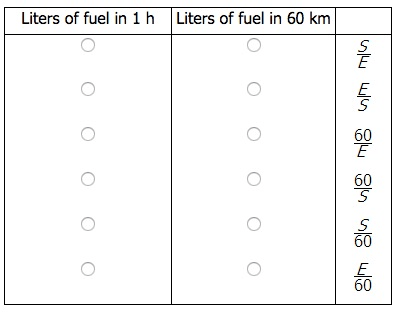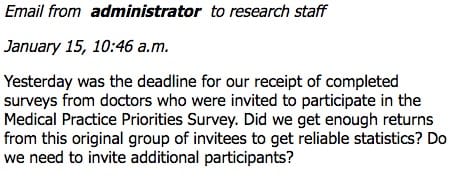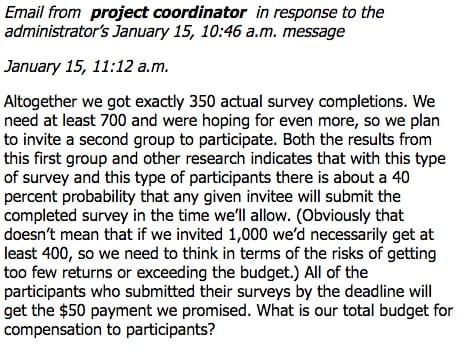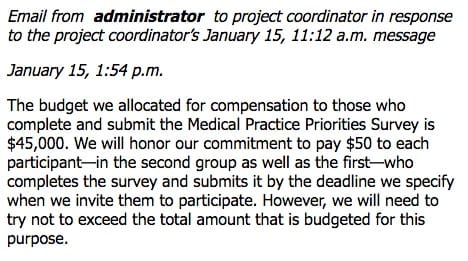GMAT Prep Guide
What is the GMAT?
The Graduate Management Admission Test (GMAT) is a standardized computer adaptive exam used to assess test-takers’ readiness for a master of business administration (MBA) program. More than 6,000 MBA programs currently use the GMAT as a predictor of student performance, and GMAT results are weighed heavily during the admissions process. Often, schools look at GMAT scores before reviewing any other part of a candidate’s application. Job recruiters also look at GMAT scores as an indicator of an applicant’s ability for quantitatively intensive work.
The GMAT is required for admission to most business schools, and is offered worldwide throughout the year in designated testing facilities. Studies show that graduate degrees translate to increased earnings, and people with an online MBA degree start their management careers with a higher median salary than those without the degree.
The Graduate Management Admission Council reports that the expected median starting salary for MBA graduates in the US last year was $100,000 — $45,000 more than the median starting salary for bachelor’s graduates. Job prospects are also continually growing for MBA grads. According to the Council, 84% of employers said that they planned on hiring MBA degree-holders in 2015, a 10% increase from the year before.
The Details
When to Take the GMAT
The GMAT is offered year-round, on specific dates. Most test-takers determine the best date to take the exam according to the application deadlines of the schools to which they plan to apply. Depending on where the exam is taken, test day options range from Monday through Saturday. Morning and afternoon testing times are also available.
Where to Take the GMAT
The GMAT exam is available at testing centers all over the world throughout the year. Some countries may have specific regulations that must be followed in order to sign up for the GMAT. Students can register online to find a test location near them, and visit this page to learn about GMAT identification requirements and test center rules for their country.
How to Register
Online registration for the GMAT begins with creating a GMAT account. Once registered, users can set and manage GMAT appointments, access free sample GMAT prep questions, access GMAT scores, find school events, and research GMAT-specific articles and advice for assembling the strongest graduate school applications.
Fees
The GMAT costs $250, but there are financial aid options. The Graduate Management Admissions Council has a fee waiver program for schools, which then offers need-based financial aid scholarships to students. Other financial assistance includes employer reimbursement, loans, federal work study, and tax credits.
Retaking the Test
There are no limitations on the number of times the GMAT can be rescheduled. Test-takers who reschedule their exam more than seven calendar days before the test date must pay a $50.00 fee each time they reschedule. Those who reschedule within seven calendar days will be charged $250.00. Exams can be rescheduled online or by phone, and a $10 surcharge will be added for schedule changes made by phone.
Breaking Down the GMAT
The GMAT is comprised of an analytical writing assessment section, an integrated reasoning section, a quantitative section, and a verbal section. The exam takes 3.5 hours to complete, and is delivered on a computer. Once a question is answered, the student cannot return to it. Additionally, the quantitative and verbal sections employ computerized adaptive testing. This means that the response given to each question will determine the difficulty level of the next question. For example, if a test-taker answers a question of average difficulty correctly, the next question will be of slightly greater difficulty. Eventually, test-takers will be given a steady stream of questions that are around the same level of difficulty. Those who answer more of the difficult questions correctly will score higher in the end.
| GMAT TEST SECTION | # OF QUESTIONS | QUESTION TYPES | TIMING |
|---|---|---|---|
| Analytical Writing Assessment | 1 Topic | Analysis of Argument | 30 Minutes |
| Integrated Reasoning | 12 Questions | Multi-Source Reasoning, Graphics Interpretation, Two-Part Analysis, Table Analysis | 30 Minutes |
| Quantitative | 37 Questions | Data Sufficiency, Problem Solving | 75 Minutes |
| Verbal | 41 Questions | Reading Comprehension, Critical Reasoning, Sentence Correction | 75 Minutes |
| Total Exam Time: | 3hrs, 30 mins | ||
Analytic Writing Assessment
The analytical writing assessment section is designed to evaluate a student’s argument analysis and critical thinking skills. Students have 30 minutes to write an essay that critiques a given argument. The essay should point out problems with faulty reasoning in the argument, and ways to improve it. Evaluators score the response based on quality of the analysis –including relevance of examples and a thorough explanation of gaps in the argument’s reasoning. Command of grammar, coherent organization, and development of ideas are weighed heavily during evaluation.
Composition
There is only one prompt for this section. It is an argumentative passage taken from a source that does not require specialized knowledge to analyze. Sample prompts are available. The argument presented will be flawed in one or more ways, and the main analytical task is to determine how and why the evidence presented does not support the author’s conclusion.
The student is expected to write a short essay (typically three to five paragraphs) identifying and explaining the argument’s flaws, or gaps in the logic of the argument, and suggest relevant improvements. The student’s own view is not relevant to the analysis and critique. Instead, the focus is on the objective features of the argument. The identification and explanation of these errors, along with suggested improvements to the argument, produce a counter-argument.
Sample Questions
In this section, you will be asked to write a critique of the argument presented. You are not asked to present your own views on the subject.
The following appeared in the editorial section of a monthly business news magazine:
“Most companies would agree that as the risk of physical injury occurring on the job increases, the wages paid to employees should also increase. Hence it makes financial sense for employers to make the workplace safer: they could thus reduce their payroll expenses and save money.”
Discuss how well reasoned you find this argument. In your discussion be sure to analyze the line of reasoning and the use of evidence in the argument. For example, you may need to consider what questionable assumptions underlie the thinking and what alternative explanations or counterexamples might weaken the conclusion.
You can also discuss what sort of evidence would strengthen or refute the argument, what changes in the argument would make it more logically sound, and what, if anything, would help you better evaluate its conclusion.
See sample response here
Source: MBA.com
Common Pitfalls
One of the most common mistakes among test-takers is their failure to proofread what they have written. While test evaluators will not dwell on spelling errors, grammatical errors can interfere with the overall clarity of the essay. Another trap that test-takers tend to fall into is thinking that the exam is asking for their opinion. Scorers are not looking for a test-taker’s ability to choose the “correct” side of an issue, but rather their ability to argue one side of the issue using strong examples and counterexamples.
TIPS AND TRICKS
- Craft a response in your mind: evaluate the argument, create a mental outline, and clearly identify of all the points you would like to make before you start writing.
- Don’t flip-flop: pick one side of the argument and follow through with it, even if you may not agree with it personally.
- Refute the other side of the argument: to further drive your point home, address and refute the other side of the argument. This is also a nice way to neatly wrap up your essay.
- Review sample topics ahead of time: review and craft responses to sample arguments found online so you can become familiar with 1) the types of arguments you will be evaluating; 2) how to template your response; 3) how to manage your time when writing; and 4) how responses are scored.
- Get creative: you can have fun with the essay, as long as the points you make are relevant.
Integrated Reasoning
The integrated reasoning section measures one’s ability to integrate data from a variety of sources to solve problems. The data are presented in graphs, tables, and written information. Students have 30 minutes to complete 12 questions. Some involve multi-part analysis, which means a single question may have more than one component the student must answer in order to receive a score. In addition, one prompt may be used for more than one question. A calculator is provided on the computer.
Composition
There are 12 questions in the integrated reasoning section, and four types of questions that involve charts, numeric tables, graphs, and prose text. Each exercise involves one or more skills: information synthesis, evaluation of information from diverse sources to reveal relationships and to solve interrelated problems, and manipulating information from multiple sources to solve problems.
The multi-source reasoning format is presented on a split screen, one side of which has information; the other side contains the questions. The table analysis presents a table of numbers, sortable by column. One question in this sub-section will have multiple parts. Graphic interpretation is presented visually, but in multiple ways (e.g., line graphs or pie charts). Questions in this sub-section are in drop-down menu form. Two-part analysis questions are presented in table form.
Sample Questions
In this section, all parts of a single question must be answered correctly to receive credit; there is no partial credit given. In addition, all parts of a question must be answered before a new question on another screen is presented.
Graphics Interpretation
Refer to the pictograph of a survey of students at Central Community College. Each symbol represents 10 students in a sample of 300.

1. If one student is selected at random from the 300 surveyed, the chance that the student will be under 30 or a high school graduate or both is _________.
A. 1 out of 6
B. 1 out of 3
C. 2 out of 3
D. 5 out of 6
2. If one student is selected at random from the 300 surveyed, the chance that the student will be both under 30 and a high school graduate is _________.
A. 1 out of 6
B. 1 out of 3
C. 2 out of 3
D. 5 out of 6
Source: MBA.com
Common Pitfalls
In an effort to move quickly through a section, test-takers risk missing important information. Since the integrated reasoning section of the GMAT focuses on analyzing and synthesizing data from diverse sources, no information presented should be overlooked. Once the student understands what a question is asking, the answer can be found in the relevant table, chart, etc.
TIPS AND TRICKS
- Look for relationships between variables: a question may present multiple data points, such as tables, charts, and graphs. Conducting a cursory survey of the relationships between the items provides a solid foundation for answering the relevant questions.
- Interrogate the data: ask what the data is telling you. There are likely generalizations to be drawn from the data.
- Pay attention to units: there may be information presented in, e.g., inches, yards, and meters, and part of the task is to see how these units relate or convert.
- Labels are important: the labels on a chart, graph, etc., will provide information to be integrated in the reasoning process. Do not ignore them.
- Don’t invest too much energy: this section is only 30 minutes long and is scored separately. Many experts agree that test-takers should not get too caught up in this section, and instead save their mental energy for the verbal and quantitative sections.
Quantitative
The quantitative section measures a student’s content and analytic knowledge. Most of the math questions in the section cover skills learned at the high school-level, and test-takers should be prepared to know basic concepts, equations, and rules in arithmetic, algebra, and geometry. The quantitative section is included in the exam because of the emphasis on quantitative reasoning in business school.
Composition
There are 37 questions in the quantitative section, and they are a mix between two types: problem solving and data sufficiency. Data sufficiency exercises (20-24 questions) test management skills by presenting statements that are or are not sufficient to answer the question. This will be presented as a main question followed by two statements of data. Test-takers must decide whether the statements provide enough information to answer the question. Problem solving exercises (13-17 questions) are presented as a question with five multiple-choice answers.
Both question types involve reasoning in arithmetic (approximately 46%), geometry (approximately 14%), and algebra (approximately 40%). The questions range from properties of integers to counting series, functions, exponents, and word problems consisting of each subject listed. Many questions cover statistics, unknown variables, coordinate geometry, and fractions.
Sample Questions
Problem Solving
1. Of the following, which is greater than 1/2?
A. 2/5
B. 4/7
C. 4/9
D. 5/11
E. 6/13
2. If an object travels at five feet per second, how many feet does it travel in one hour?
A.30
B.300
C.720
D.1800
E.18000
3. What is the average (arithmetic mean) of all the multiples of ten from 10 to 190 inclusive?
A.90
B.95
C.100
D.105
E.110
Source: MajorTests.com
Common Pitfalls
Pattern-making is an essential and natural cognitive skill applicable to mathematics, but test-takers have to avoid traps in the questions. For example, distribution patterns don’t apply to reciprocals and square roots, and exponents distribute over addition and subtraction. In addition, common mistakes include dropping the negative sign, dividing by the numerator, distributing a square, distributing a root, and distributing a fraction. Any of these mistakes can trip up anyone going too quickly.
TIPS AND TRICKS
- No calculators are allowed in this section: test-takers should be prepared for mental calculations and review basic math tricks.
- Evaluate statements one at a time: for the data sufficiency questions, some test-takers may find it helpful to cover up the second statement so they don’t get distracted by it.
- Use the elimination method: there is a systematic technique for eliminating answers on the data sufficiency questions.
- Don’t waste time finding the answer: data sufficiency questions are not about solving a math problem, but about determining whether or not you have enough data to solve the problem.
- Memorize the answer choices: the answer choices will be the same for every data sufficiency question. They should be ingrained in your mind so that you don’t waste your time reading through them for every question.
Verbal
The verbal section consists of 41 multiple-choice questions, including reading comprehension, critical reasoning, and sentence correction. This section is designed to measure a test-taker’s ability to read and comprehend written material, evaluate arguments, and correct wording according to the rules of standard written English. The test-taker has 75 minutes to complete the section.
Composition
There are 14 reading comprehension questions (34%), 11 critical reasoning questions (27%), and 16 sentence corrections (39%). Reading comprehension questions test a person’s critical reading skills. Test-takers may be asked to summarize the main idea of a passage, make inferences based on details provided in the text, or to identify the tone or purpose of the author. Critical reasoning questions test a person’s ability to evaluate an argument in a given statement and to draw conclusions from evidence provided in the text. These statements often cover topics such as wages and labor, supply and demand, statistical testing, law and the legal system, and economic growth. The sentence correction questions assess a test-taker’s written English skills.
Sample Questions
In this section, test-takers are given a lengthy sentence, part of which is underlined, they will be asked to replace the underlined part with one of the answers provided.
Reading Comprehension
Instructions – The questions in this group are based on the content of a passage. After reading the passage, choose the best answer to each question. Answer all questions following the passage on the basis of what is stated or implied in the passage.
Question – Schools expect textbooks to be a valuable source of information for students. My research suggests, however, that textbooks that address the place of Native Americans within the history of the United States distort history to suit a particular cultural value system. In some textbooks, for example, settlers are pictured as more humane, complex, skillful, and wise than Native Americans. In essence, textbooks stereotype and depreciate the numerous Native American cultures while reinforcing the attitude that the European conquest of the New World denotes the superiority of European cultures. Although textbooks evaluate Native American architecture, political systems, and homemaking, I contend that they do it from an ethnocentric, European perspective without recognizing that other perspectives are possible.
One argument against my contention asserts that, by nature, textbooks are culturally biased and that I am simply underestimating children’s ability to see through these biases. Some researchers even claim that by the time students are in high school, they know they cannot take textbooks literally. Yet substantial evidence exists to the contrary. Two researchers, for example, have conducted studies that suggest that children’s attitudes about particular cultures are strongly influenced by the textbooks used in schools. Given this, an ongoing, careful review of how school textbooks depict Native Americans is certainly warranted.
Which of the following would most logically be the topic of the paragraph immediately following the passage?
(A) specific ways to evaluate the biases of United States history textbooks
(B) the centrality of the teacher’s role in United States history courses
(C) nontraditional methods of teaching United States history
(D) the contributions of European immigrants to the development of the United States
(E) ways in which parents influence children’s political attitudes
Source: MBA.com
Common Pitfalls
One of the biggest traps test-takers fall into is getting caught up in tricky wording. Critical reading questions, specifically, are known to be lengthy and complicated, so test-takers are advised to read carefully. They are also warned not to spend too much time on shorter questions, as the longer passages will need more time.
TIPS AND TRICKS
- Questions won’t directly test vocabulary: unlike many other standardized exams, GMAT’s verbal section does include questions that directly test vocabulary, although students will come across advanced words in the passages. Non-native English speakers are advised to review sample passages ahead of time to become familiar with the types of vocabulary used.
- Know the most common types of reading comprehension questions: on the reading comprehension section, test-takers often forget to read for the general sense of the passage, and instead get bogged down in details. The questions are typically about the passage’s main idea or the author’s purpose in writing the passage.
- Compare and eliminate: the “perfect” answer may not be available among the options. Identify the options that make the most sense. Typically, test-takers can discard two of the answers that are distinctly different than those.
- Use scrap paper: test-takers may find that scrap paper is useful for organizing facts and taking notes.
- Brush up on common grammatical concepts such as: Subject-verb agreement, Grammar, meaning, concision, Parallelism, Pronouns, Modifiers, Verb tense, mood, and voice, Comparisons, and Idiomatics.
Scores
A GMAT score is valid for five years. The Official Score Report includes all GMAT scores for a five-year period, a photograph of the test taker at the test center, self-reporting information (e.g., phone number, GPA), and percentile rank. If the exam is taken multiple times, each total score is reported; scores are not combined.
The total score for a given GMAT exam is determined by the quantitative and verbal sections only. The analytical writing assessment and the integrated reasoning sections are scored separately. A perfect score is 800, but most scores range from 400 to 600. The analytical writing assessment score is determined by two independent readers, one of which may be a computer program written to evaluate 50 linguistic and structural features. The analytical writing assessment scores range from zero to six, with half-point increments. Integrated reasoning scores range from 1 to 8, with no increments. Because the integrated reasoning section includes multi-part questions, all parts of an exercise must be completed to receive credit.
Answer all of the questions. There is a greater penalty for skipping a question than answering it incorrectly.
Unofficial scores are available immediately after taking the exam. Official electronic results are available within 20 calendar days of testing, and are also sent electronically to schools selected on the day of the exam. An email with instructions on accessing the results is emailed to the test taker. Paper results are mailed to the test taker and selected schools within 20 calendar days of testing. If, on the day of the exam, a test taker does not select schools to report results, or if the test taker wants to select more than five schools, they can order additional score reports for a fee. Students who want to wait and see their test results before they are sent to a school may decide not to select any schools in advanced. Once a score is sent to a school, it cannot be undone.
What if I’m Not Ready to Apply Right Away?
GMAT scores are valid for five years, and the exam can be taken multiple times. Scores can be canceled, and not reported to schools. Someone wishing to formally take the exam for practice, for example, may wish to cancel the score. The GMAT’s Score Preview feature gives students the option of sending or canceling their score at the test center, immediately after they have completed the exam. Canceled scores can be reinstated for a fee. Scores older than five years are non-renewable.
Preparing for the GMAT
Test-takers should become familiar with the format and structure of the exam, and spend additional time on the sections they struggle with. The amount of time people spend preparing for the test varies widely, with roughly the same number studying 20 hours or fewer (21%); 21-50 hours (23%); 51-100 hours (28%); and 100 hours or more (28%).
Hours Spent Preparing for the GMAT Exam
Time spent studying correlates strongly with success on the exam. The Graduate Management Admission Council found that individuals who reported studying for 75 hours scored less than 400 on the exam, on average. In contrast, students who spent an average of 121 hours studying reported scoring 700 or higher.
Studying Resources
There is no one-size-fits-all approach to studying for the GMAT. Once familiar with the format and structure of the exam, reviewing your strengths and weaknesses will provide a good starting point for creating a study plan. Additionally, consulting legitimate resources for study materials, including sample exams, is essential. Pre-2012 exams, for example, do not include the integrated reasoning section.
A practice test provides an opportunity to take either an actual GMAT from a previous year, or a professionally produced simulation. There are quite a few free online exams; others can be purchased in bundles starting at about $24, and others are included with additional test prep resources, such as a class, that can cost upwards of $750. Practice exams are good for all test-takers, but they are particularly useful for those with test-taking anxiety. Below are links to popular GMAT practice tests.
- MBA: GMATPrep software free to registered MBA.com users.
- Princeton Review: Free online practice test and resources.
- Manhattan Prep: One free and six additional practice tests available for purchase.
- Kaplan: Free online test, both self- and instructor proctored.
- Veritas: Free online test, and seven additional practice tests available for purchase.
Studying on a Budget
There are multi-platform prep options for under $500. There are also many free test guides and online practice tests available. It’s not necessary to take an expensive prep course in order to score well on the GMAT. A well-organized learner with a solid plan can prepare for the GMAT at little to no cost.
- Khan Academy
Problem solving and data sufficiency exercises are solved in a variety of videos, and strategies are presented. - Official GMATPrep
More than 90 GMAT exam questions, along with answers and tips from test creators, and test taking simulation. - Manhattan Prep
Free on site prep events are held at various locations. - 800Score.com
Free timed GMAT essays.
TIPS AND TRICKS
- Consistency instead of cramming: remain consistent by studying in short, daily sessions rather than trying to cram in tons of information over the weekends. Make a study plan and stick with it.
- Take practice tests: completing practice tests is one of the best ways to study and become familiar with real test conditions. Many companies offer prep tests that use the same adaptive question algorithm as the real test, so if you take the practice tests multiple times and show improvement, you’re bound to be exposed to a wider range of questions.
- Learn prefixes and suffixes: this information may come in handy if you come across a word you don’t know on the test.
- Focuses on weaknesses: identify your weakest area and spend extra time focusing on that during GMAT prep. Don’t devote all your time to just one area, however, as other information may be pushed back and forgotten.
- Read, read, read: to prepare for the verbal section, immerse yourself in language-rich reading material. This helps train your ear and mind to process more complicated reading passages.
- Practice time management: during the actual exam, an on-screen clock counts down the time remaining once a section has begun. Get used to sticking to a consistent time schedule when completing prep tests. For example, each time you practice the verbal section and look at the clock to see 60 minutes remaining, you’ll know that you should have already reached question #10.
- Cool Down: about two weeks out from the exam, stop learning new material and strategies, and start reviewing what you already know.
The Night Before
A prepared test taker is a relaxed test taker. On the night before the exam, there is no more preparation to do. Instead, relax and mentally prepare yourself to take the test.
 DO’S
DO’S
Think positive thoughts
Practice relaxation techniques
Eat a healthy dinner the night before and a sensible breakfast
Arrive 30 minutes early at the testing center
 DONT’S
DONT’S
Load up on caffeine
Stay up late cramming in any last-minute study time
Exercise too strenuously the night before
Abandon your usual daily routine
What to Expect on Test Day
Test-takers should arrive at the test center at least 30 minutes before the exam. Anyone arriving 15 minutes or more after the start of their scheduled exam time may not be admitted and may also forfeit their exam fee. Test-takers should bring with them a valid I.D., such as a driver’s license, passport, or military I.D.
The test center has private computer work stations for each test taker. The test begins promptly when the test taker reaches their designated computer station. Five-minute breaks are allowed in between each section. It is during these times only that test-takers can have food and drinks. Exams are interrupted only if there are exigent circumstances, such as weather conditions or technical problems.
THINGS TO BRING WITH YOU
- Your admission ticket and personal ID
- List of schools to receive scores
THINGS TO LEAVE AT HOME
- Cell phones, watches, cameras
- Books, scratch paper, pencils
Taking the GRE with Disabilities
There are various accommodations for test-takers with disabilities or health concerns. Those who meet eligibility requirements are afforded additional time to complete the exam, additional or extended breaks in between testing sections, use of a medical device in the testing room, a test reader, a trackball mouse, a recorder for test taking responses, sign language interpreter, and large font on the monitor. Some aids do not require authorization. These include eyeglasses, hearing aids, insulin pumps, and neck pillows.
Anyone who wants a GMAT test accommodation should review the requirements, and complete and submit the GMAT Test Accommodations Request Form. Some disabilities require documentation, which should be included in the accommodations request package. These include psychological, sensory, and learning disabilities. Accommodation requests can be sent by mail or fax. Average responses take seven to 10 days, but they can last up to four weeks.
Additional Resources
“Overcome GMAT Exam Anxiety: Breathe!”
Magoosh’s GMAT blog includes an article on the physiology of anxiety, and how to reduce it.
“GMAT Test Anxiety”
GMAT Hack describes the sorts of anxiety one may feel when preparing for and taking the GMAT.
“5 Ways to Minimize Test-Day Anxiety”
The Veritas article covers some background on the GMAT, providing practical tips for managing test anxiety.
Beat the GMAT
This site offers a variety of free GMAT resources.
GMAT Prep Timeline
The official GMAT site provides a free preparation timeline.
Top 6 Prep Materials from a 710 Scorer
A GMAT test taker discusses a variety of materials considered to be helpful in improving or achieving solid scores.
The Graduate Management Admissions Council
A variety of integrated reasoning resources are linked from this site.
Studying Smarter, Not Harder
Discovery Business offers a concise set of strategies for taking the GMAT.
Military Reimbursement
The military reimburses members through the G.I. Bill eligibility.
Explore More College Resources

Summer Semester: When Does It Start? And Should You Enroll?
School’s out — or, rather, in — for summer. Discover the pros and cons of enrolling in an optional summer semester in college.

by Anne Dennon
Updated March 20, 2023





